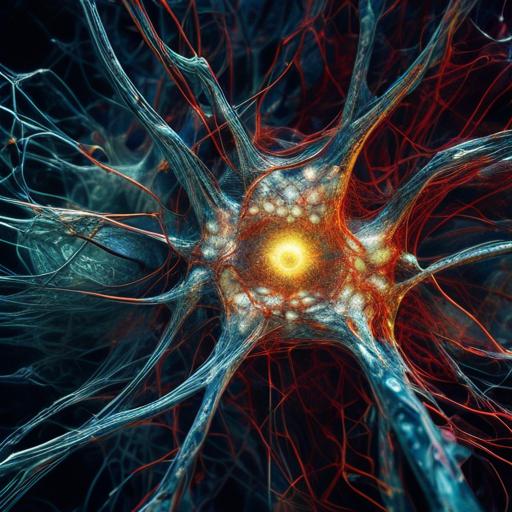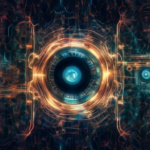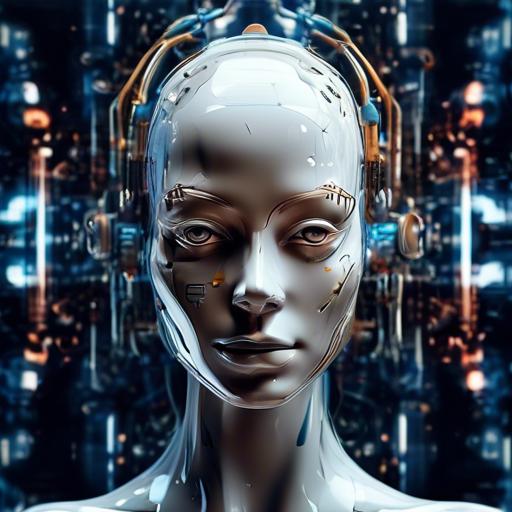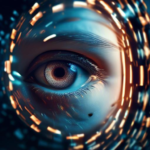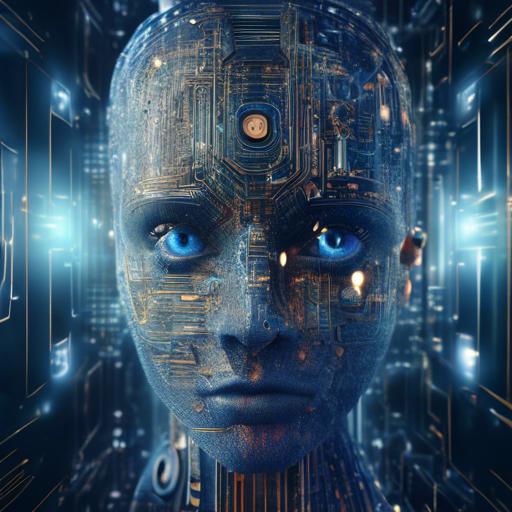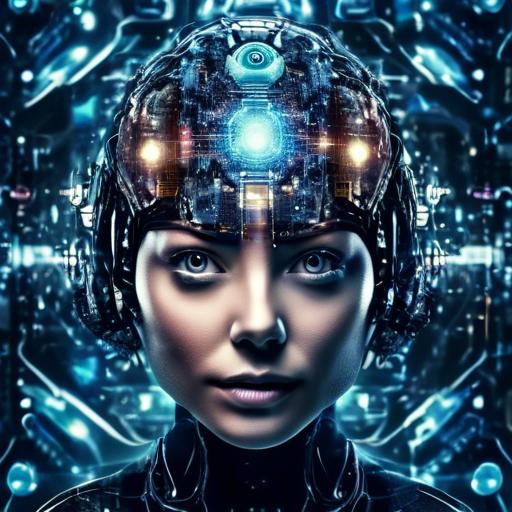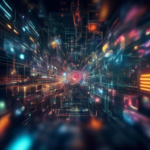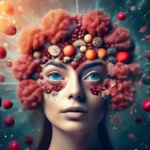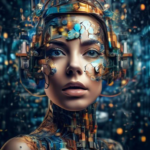In the vast universe of digital artistry, a revolution stirs at the crossroads of technology and imagination. It’s here that neural networks—a marvel of modern artificial intelligence—emerge as potent wizards, wielding algorithms like magic wands to summon vivid creations from the realm of the unseen. Imagine a universe where a mere string of code can breathe life into pixels, conjuring images that captivate the eye and stir the soul. This isn’t science fiction; it’s the exciting reality unfolding before us. In this article, we embark on a journey to explore the groundbreaking role of neural networks in creating images, shedding light on how these digital masterminds are transforming the canvas of creativity. Welcome to the intersection of art and algorithm, where the impossible becomes possible with just a spark of neural genius.
Table of Contents
- From Pixels to Art: Understanding the Basics of Neural Networks
- The Magic Behind Generative Adversarial Networks
- Training Your Neural Network for Image Creation
- Achieving Realism: Techniques for Enhancing Image Quality
- Ethical Considerations in AI-Generated Imagery
- Applications: From Entertainment to Medical Imaging
- Best Practices for Safe and Responsible AI Use
- Wrapping Up
From Pixels to Art: Understanding the Basics of Neural Networks
To truly grasp how neural networks can transform pixels into intriguing pieces of art, one must first understand the fundamental building blocks of these sophisticated systems. At their core, neural networks are designed to mimic the way human brains process information. They consist of layers of neurons—each layer uniquely contributing to the final output.
**The basic architecture** of a neural network involves:
- **Input Layer**: Where raw data, such as pixel values, enter the network.
- **Hidden Layers**: Intermediate layers that perform computations on the data, progressively extracting higher-level features.
- **Output Layer**: Where the network delivers its final output, whether that be an image classification, artistic rendering, or something else entirely.
The power of neural networks to create art lies in their ability to recognize and replicate complex patterns. By training on vast datasets of images, neural networks learn to understand the subtle nuances and characteristics that define various artistic styles. This understanding enables them to generate new images that can be strikingly original or bear the signature traits of famous artists.
| Traditional Methods | Neural Networks |
|---|---|
| Manual adjustments | Automated feature extraction |
| Limited by human skill | Continually improves with data |
| Time-consuming | Relatively fast once trained |
Neural networks aren’t just a tool for replication—they are also a medium for innovation. Techniques such as **Style Transfer** have revolutionized the art world. By applying the texture of a Van Gogh painting to a modern photograph or blending the themes of different art movements, the possibilities are truly boundless. These generated artworks are not mere copies; they are unique interpretations powered by the intelligence of neural networks.
The use of **Generative Adversarial Networks (GANs)** has further pushed the boundaries. GANs involve two competing networks—a generator and a discriminator. The generator creates images, while the discriminator evaluates them. Through this dynamic, the generator gets progressively better, resulting in stunningly authentic new works of art that can fool even human critics.
The Magic Behind Generative Adversarial Networks
Generative Adversarial Networks (GANs) are fascinating subsets of neural networks that have revolutionized how we can create and manipulate images. At their core, GANs consist of two main components: the generator and the discriminator. These two networks are set against each other in a kind of digital duel. The generator’s role is to create images that resemble real photographs, while the discriminator’s task is to distinguish between genuine images and the ones crafted by the generator. This cat-and-mouse game forces the generator to produce increasingly realistic images, sometimes achieving stunning results that are almost indistinguishable from the originals.
One of the magical aspects of GANs is their ability to learn without direct supervision. Unlike traditional methods, which often require pre-labeled data, GANs thrive on unlabelled data. Whether crafting hyper-realistic human faces, imaginative landscapes, or abstract art, the generator learns to mimic the subtleties and nuances based on the feedback from the discriminator. This unsupervised learning technique opens up a world of possibilities for creative projects, design, and even scientific research.
| GAN Component | Role |
|---|---|
| Generator | Creates images that mimic real photos |
| Discriminator | Identifies if images are real or generated |
The applications of GANs are vast and varied. Here are a few fascinating use cases:
- Art Creation: Artists use GANs to co-create dynamic and visually stunning art pieces that break the boundaries of traditional creativity.
- Image Restoration: GANs can restore old and damaged photographs, giving them a new lease on life by filling in gaps and enhancing details.
- Medical Imaging: In the healthcare sector, GANs assist in improving the resolution of medical images, aiding doctors in making more accurate diagnoses.
The way GANs operate feels like digital magic, capable of transforming vague concepts into vivid visualizations. As they continue to evolve, it’s exciting to imagine how they’ll shape the future of image creation and beyond. Just think of a world where machines can visualize your thoughts and bring them to life, one pixel at a time.
Training Your Neural Network for Image Creation
When it comes to , the journey can be as exciting as it is complex. Imagine guiding your neural network, much like a sculptor chiseling away at a block of marble, to reveal a masterpiece. The process involves careful planning, a good understanding of your tools, and patience.
- **Data Collection**: Start with a diverse dataset to feed your neural network. The images you choose form the foundation upon which your model will build its creativity.
- **Pre-processing**: This stage is akin to prepping your canvas. Normalize your images, resize them, and perhaps add a few transformations to enhance the learning process.
- **Model Selection**: Choose the right architecture for your task. Popular choices include Generative Adversarial Networks (GANs), Variational Autoencoders (VAEs), and newer models like DALL-E.
Ensuring your neural network receives a balanced diet of data is crucial. An imbalanced dataset might lead to biased outputs, akin to an artist who has only ever painted with one color. Remember, every pixel counts. Utilize data augmentation techniques to enhance your dataset’s richness. This could involve flipping images, adjusting brightness, or cropping.
| Technique | Purpose |
|---|---|
| Flipping | Creates mirror images, increasing diversity. |
| Brightness Adjustment | Helps the model learn to create images in varying light conditions. |
| Cropping | Encourages focus on different parts of an image. |
Additionally, fine-tuning your model is like adding the finishing touches to a painting. This phase involves tweaking hyperparameters such as learning rates, batch sizes, and the number of epochs. Monitor your model’s performance using validation sets to avoid overfitting—a common pitfall where the model performs brilliantly on training data but fails to generalize on new data.
- **Learning Rate**: A crucial parameter that controls how much the model learns at each step. Too high or too low can hinder performance.
- **Batch Size**: Defines the number of images processed before the model’s internal parameters are updated.
- **Epochs**: Determines how many times the entire dataset is passed through the neural network.
remember to keep an iterative mindset. Training a neural network is not a set-it-and-forget-it task. Continuously evaluate and refine your model, taking inspiration from traditional artists who constantly evolve their techniques. With dedication and perseverance, your neural network can create stunning, unique images that may just rival those painted by human hands.
Achieving Realism: Techniques for Enhancing Image Quality
Perception Matters: A crucial element in achieving realism through neural networks is enhancing how they learn to recognize and replicate intricate details. Crucial techniques aim at training models to focus on texture, lighting, and fine-grained patterns. GANs (Generative Adversarial Networks) are particularly effective, where two networks—the generator and the discriminator—work in tandem to create superior quality images. By pitting these networks against each other, the final outputs become increasingly indistinguishable from real images as they improve iteratively.
Training Datasets: High-quality, diverse datasets are the cornerstone of any realistic image generation project. This means not just volume, but also variety in the data, including different angles, lighting conditions, and textures. Dataset curation is an ongoing process where feedback loops help in refining and updating the data to address any areas where realism falters. Tools like data augmentation are instrumental in increasing the dataset’s size without the need for additional real images.
| Technique | Application |
|---|---|
| Super-Resolution | Enhances image details and sharpness |
| Style Transfer | Applies artistic styles to images |
| Image Inpainting | Fills in missing parts of images gracefully |
Fine-Tuning: Beyond initial training, fine-tuning of neural networks is critical for achieving realism. This involves adjusting hyperparameters, refining the loss functions, and sometimes even customizing the architecture of the network to specifically target areas that need enhancement. Techniques like transfer learning can be employed to leverage pre-trained models, speeding up the process while achieving superior results.
Post-Processing: Even with advanced neural networks, post-processing is often necessary to achieve the highest level of realism. Techniques such as denoising, edge enhancement, and color correction help bridge the gap between generated images and reality. In many instances, these adjustments are subtle but significant, providing the final touch that elevates the image from good to exceptional.
- Experimentation: Continuous experimentation and iteration help in discovering new techniques and fine-tuning existing ones.
- Community Sharing: Leveraging insights from the community can lead to novel approaches and faster advancements.
- User Feedback: Real-world feedback can guide the development process, ensuring that neural network outcomes meet practical needs and expectations.
Ethical Considerations in AI-Generated Imagery
As neural networks become increasingly adept at creating visual content, ethical considerations emerge as a crucial aspect to examine. These powerful algorithms blur the lines between reality and artificiality, raising questions about originality, ownership, and societal impact. It becomes our responsibility to understand and navigate these ethical minefields.
One major concern involves the **ownership and copyright** of AI-generated images. Traditional copyright laws are designed to protect human creators, leaving a grey area for content produced by machines. Who owns the rights to an image generated by a neural network? The developer, the user, or perhaps the AI itself? Establishing clear guidelines here is essential for fair and ethical use.
| Issue | Ethical Question |
|---|---|
| Ownership | Who holds the copyright to machine-generated images? |
| Manipulation | Can AI-generated images be used to mislead or deceive? |
| Transparency | Should the artificial nature of the image be disclosed to viewers? |
Another significant ethical consideration is the potential for **misuse and manipulation**. AI-generated imagery can be incredibly convincing, making it an ideal tool for spreading misinformation. From deepfakes to staged news photos, the misuse of these technologies can have far-reaching consequences. It’s crucial for creators and consumers to adhere to ethical standards that discourage deceitful practices.
The technology also poses a risk to **creative industries**. Will AI diminish the value placed on human artistry? While some argue that neural networks can complement human creativity by offering new tools and perspectives, others fear a future where human artists are sidelined. Balancing technological advancement with the preservation of human-centric creative processes is key.
- Transparency: Always disclose when an image is AI-generated to maintain trust and integrity.
- Accountability: Establish protocols to hold creators accountable for the misuse of AI-generated content.
- Inclusivity: Ensure that AI technologies are accessible and beneficial to all, not just a privileged few.
We stand at the intersection of innovation and ethics, where the decisions we make today will shape the future landscape of digital creativity. By acknowledging and addressing these ethical considerations, we can ensure that neural networks serve as a positive force in the realm of visual content.
Applications: From Entertainment to Medical Imaging
Neural networks have revolutionized the digital world by making significant strides in various fields. These sophisticated algorithms, inspired by the human brain, are proficient at creating lifelike images which stretch beyond traditional boundaries. In the entertainment industry, neural networks are now capable of generating realistic characters, scenery, and even animations, making the virtual experience immersive and captivating.
Consider the following applications where neural networks stand as a pivotal technology:
- Video Game Development: Procedurally generated landscapes and realistic character designs bring richer environments and more engaging stories.
- Film Post-Production: Special effects and CGI become more seamless, blending fantasy with reality convincingly.
- Virtual Reality (VR): Enhanced realism for an immersive experience, elevating gaming and simulations to new heights.
But the utility of neural networks doesn’t end there. In the realm of medical imaging, these network models are proving indispensable. By analyzing vast amounts of data, neural networks assist in diagnosing diseases at their early stages, ensuring prompt and accurate treatment plans. For instance, they are adept at detecting anomalies in X-rays, MRIs, and CT scans, often identifying issues that may be missed by the human eye.
| Field | Application |
|---|---|
| Radiology | Abnormality Detection |
| Oncology | Tumor Identification |
| Cardiology | Heart Disease Prediction |
Moreover, neural networks excel in generating synthetic data to train medical models, facilitating research and development with robust datasets. These synthesized images mimic real medical images, thus augmenting the training process for upcoming AI systems.
In essence, neural networks serve as a bridge between creativity and functionality, unlocking a spectrum of possibilities that span from entertainment to critical medical applications. As we delve deeper into the capabilities of these networks, the potential for groundbreaking advancements continues to expand.
Best Practices for Safe and Responsible AI Use
Artificial intelligence has democratized the creation of images, enabling even those with no art background to generate stunning visuals through neural networks. However, with this power comes responsibility. Here are some best practices to ensure safe and responsible AI use:
- Understand your tools: Before diving into AI-powered image creation, take time to understand the neural networks and algorithms you’re using. Familiarize yourself with their capabilities and limitations.
- Respect intellectual property: Make sure that the datasets you use are free from copyrighted material. Always credit original creators and be mindful of the source of your training data.
- Prioritize transparency: Clearly disclose when an image has been generated or altered by AI. Transparency fosters trust in your work and contributes to ethical standards in the AI community.
| Aspect | Why It Matters |
|---|---|
| Data Privacy | Safeguards sensitive information, protecting user privacy and complying with data regulations. |
| Bias Mitigation | Ensures that AI-generated images do not perpetuate social, racial, or gender biases. |
| Ethical Use | Promotes positive societal impact and minimizes misuse. |
- Implement bias checks: Neural networks can unintentionally perpetuate biases present in their training data. Regularly audit your models and datasets for biases and correct them to ensure fair representation.
- Consider the impact: Reflect on how your AI-generated images may affect viewers. Avoid creating content that could be harmful, misleading, or offensive.
By adhering to these best practices, you can harness the power of neural networks to create images that are not only visually appealing but also ethically sound and socially responsible.
Wrapping Up
the role of neural networks in creating images is nothing short of revolutionary. From generating realistic portraits to designing intricate landscapes, these groundbreaking technologies are pushing the boundaries of what is possible in the world of visual art. As we continue to witness the incredible advancements in this field, one thing is clear: the future of image creation is in good hands with neural networks leading the way. So let us embrace this exciting journey and look forward to a world where creativity knows no bounds. Thank you for diving into this fascinating topic with us, and may your imagination continue to soar with the help of neural networks. Cheers to a future filled with endless possibilities!

